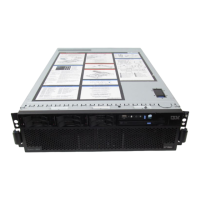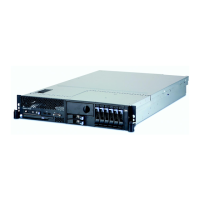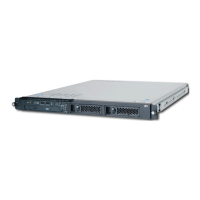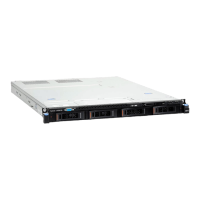Cabling your server
Learn how to cable your server with a console or interface that is available for your server. This might
include the Advanced System Management Interface (ASMI), Hardware Management Console (HMC),
Integrated Virtualization Manager, Operations Console, twinaxial console, or the Thin Console for System
i5
®
.
If you are installing a new server and have not created a customized setup checklist, see Creating a
customized initial server setup checklist. The initial server setup checklist provides an end-to-end setup
checklist for you to use throughout the entire initial server setup of your server. The checklist ensures
that the system is capable of starting and that it is functional before you perform more complex and
custom configurations. For more information, see Initial server setup.
To learn more about the cabling options that are available for your server, see the following console and
interface descriptions. Then, for more information, see Planning for consoles, interfaces, and terminals.
Advanced System Management Interface
The Advanced System Management Interface (ASMI) is the interface to the service processor that
allows you to perform general and administrator-level service tasks, such as reading service
processor error logs, reading vital product data, setting up the service processor, and controlling
the system power. The ASMI might also be referred to as the service processor menus. Set up
access to the ASMI if you plan to manage the IBM AIX
®
, Linux
®
, or i5/OS
®
operating systems
without an HMC.
Hardware Management Console
The Hardware Management Console (HMC) is a dedicated workstation that runs integrated
system management software. The HMC manages hardware tasks and configures logical
partitions on managed systems. It also acts as a focal point for hardware detection and reporting.
Integrated Virtualization Manager
The Integrated Virtualization Manager provides a Web-based system management interface and a
command-line interface that you can use to manage and configure IBM System p5 and eServer p5
servers that use the IBM Virtual I/O Server. On the managed system, you can create logical
partitions, manage the virtual storage and virtual Ethernet, and view service information related
to the server. The Integrated Virtualization Manager is packaged with the Virtual I/O Server, but
it is enabled only on certain platforms and where no Hardware Management Console (HMC) is
present.
Operations Console (for IBM System i5 and eServer i5 models only)
Operations Console allows you to use one or more PCs to access and control, either remotely or
locally, the server console and control panel functions. Set up Operations Console if you plan to
manage the i5/OS operating system in a partitioned environment or if you plan to manage a
server with the i5/OS operating system in a nonpartitioned environment. If you plan to manage
a server with i5/OS in a nonpartitioned environment, you must also set up access to the ASMI to
communicate with the service processor.
Twinaxial Console (for IBM System i5 and eServer i5 models only)
The twinaxial console uses a basic command-line interface to access and manage the server, and it
does not require the use of a PC to act as a console. Set up the twinaxial console if you plan to
manage the i5/OS operating system in a partitioned environment or if you plan to manage a
server with the i5/OS operating system in a nonpartitioned environment. If you plan to manage
a server with i5/OS in a nonpartitioned environment, you must also set up access to the ASMI to
communicate with the service processor.
Thin Console for System i5 (for IBM System i5 and eServer i5 models only)
The Thin Console provides a 5250 system console for the IBM i5/OS environment on select
© Copyright IBM Corp. 2004, 2007 1

